Weilerstein Plays Barber

2022/2023 SEASON
May 4 & 6, 2023
Completely engaged. That’s how Joe Coyle feels about his life at Judson Manor.
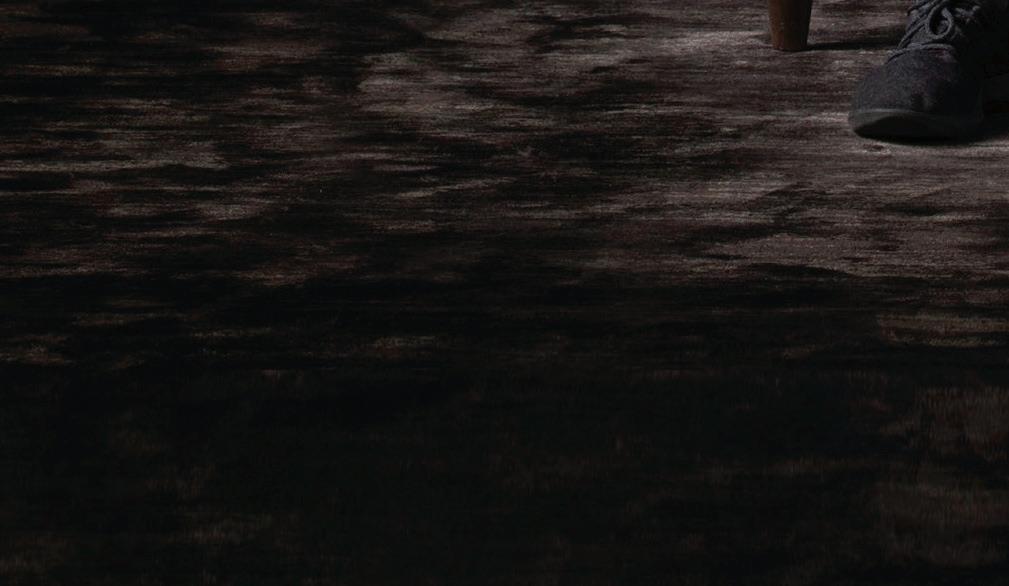



An award-winning journalist who has lived in Paris, Santa Fe, and New York City, he arrived in July 2020 via the suggestion of a fellow resident. He’s been delighted ever since.

“As a writer, I enjoy spending time alone, and these surroundings are perfect: my apartment is quiet, and the views overlooking the Cleveland Museum of Art are lovely. But by far the best part of Judson is the people. Everyone is so knowledgeable about art and culture. I wanted to have stimulating company to spend my time with, and I’ve found that here. These are wonderful, interesting people,” says Joe.
Read the full story at judsonsmartliving.org/blog
Judson Park Cleveland Heights | Judson Manor University Circle | South Franklin Circle Chagrin Falls Learn more about how Judson can bring your retirement years to life! judsonsmartliving.org | 216.446.1579
“Expanding my curiosity about life is what it’s all about.”
Joe Coyle
“ I spent my most formative years in Cleveland and played in the Cleveland Orchestra Youth Orchestra. I believe wholeheartedly that music education should be part of every child’s curriculum.”
Season’s end marks your last chance to support the musical moments you love. Community support makes every performance for you, and every program for young people possible.
Play your part. Make your gift today!
clevelandorchestra.com/give


— Alisa Weilerstein, guest artist and COYO alumna
Thanks to the richness of Cleveland’s cultural heritage and the excellence of The Cleveland Orchestra, literally millions of men, women, and children have experienced such a dawn… and it is unforgettable.

Hyster-Yale Materials Handling, Inc.
We are: Hyster® and Yale® forklift trucks, Bolzoni®, Auramo® and Meyer® attachments and Nuvera® fuel cell stacks and engines
NACCO Industries, Inc.
Parent of: The North American Coal Corporation; North American Mining; Catapult Mineral Partners; and Mitigation Resources of North America
Ralph Waldo Emerson
2022/2023 SEASON
JACK, JOSEPH AND MORTON MANDEL CONCERT HALL AT SEVERANCE MUSIC CENTER
Weilerstein Plays Barber
Thursday, May 4, 2023, at 7:30 p.m.
Saturday, May 6, 2023, at 8:00 p.m.
Franz Welser-Möst, conductor
Allison Loggins-Hull (b. 1982)
Samuel Barber (1910 – 1981)
Can You See?, for symphony orchestra 8 minutes
World Premiere, commissioned by The Cleveland Orchestra
Cello Concerto, Opus 22 25 minutes
I. Allegro moderato
II Andante sostenuto
III. Molto allegro e appassionato
Alisa Weilerstein, cello
INTERMISSION 20 minutes
Sergei Prokofiev (1891–1953)
Symphony No. 4 in C major, 35 minutes Opus 112 (1947 revision)
I. Andante — Allegro eroico
II. Andante tranquillo
III. Moderato quasi allegretto
IV. Allegro risoluto
Total approximate running time: 1 hour 30 minutes
2022/2023 Season Sponsor
Thursday evening’s concert is dedicated to Tony and Diane Wynshaw-Boris in recognition of their extraordinary generosity in support of The Cleveland Orchestra.
Thank you for silencing your electronic devices. Saturday’s
This weekend’s concerts are sponsored by Hyster-Yale Materials Handling, Inc. and NACCO Industries, Inc.
THE CLEVELAND ORCHESTRA | 3 clevelandorchestra.com
COVER: PHOTO BY ROGER MASTROIANNI
concert will be livestreamed on medici.tv.
SATURDAY, MAY 27 • 8 PM
THE CLEVELAND ORCHESTRA DIGITAL CONCERTS STREAMING NOW!




Adella, our streaming service and app, features on-demand portraits, music showcases, behind-thescenes footage and our flagship In Focus premium concert series, available anytime & anywhere


CHENERY
KALAMAZOO
AUDITORIUM,
ONCE-IN-A-LIFETIME
SONGS
RACHMANINOFF AND SOLO PIANO
LISZT.
EVGENY
KISSIN RENÉE FLEMING A
OPPORTUNITY TO HEAR TWO CLASSICAL MUSIC SUPERSTARS TOGETHER IN A PROGRAM OF
BY
WORKS BY
TICKETS START AT $40 THEGILMORE.ORG
Visit Adella.live to start watching today!
THIS WEEKEND , Music Director
Franz Welser-Möst leads The Cleveland Orchestra in the world premiere of Allison Loggins-Hull’s Can You See? for orchestra. In the work, Loggins-Hull, who is wrapping up the first year of her three-year term as the Orchestra’s Daniel R. Lewis Composer Fellow, weaves melodic threads of the US national anthem into a constantly evolving tapestry. In her composer’s note she writes of incorporating “textures and harmonic language [that] nod to the scope and diversity of American music and people.”

Succinctly packed into fewer than 10 minutes, Can You See? questions the complex history of this country, trying to reconcile the confident optimism of the “land of the free” with its brutal legacy of slavery and other lives lost. It’s a powerful statement that opens a program featuring two additional works with American origins.
The first of these is Samuel Barber’s Cello Concerto featuring soloist Alisa Weilerstein. Barber wrote this work while serving in the US Army Corps during World War II, and its subdued second movement is often considered a reflection on his idyllic upbringing in West Chester, Pennsylvania. The concerto was commissioned by legendary Boston Symphony Orchestra music director Serge Koussevitzky for cellist
Raya Garbousova — two Russian-born musicians whose careers flourished in the United States. Koussevitzky was also behind the final work on tonight’s
concert, Prokofiev’s Symphony No. 4, which was initially written while the composer was touring the US before being revised back in the Soviet Union.
The experiences of these musicians — whether they were born in the United States or came here later in life; whether they benefited from privilege or faced structural barriers — form the basis of the inaugural Jack, Joseph and Morton Mandel Opera & Humanities Festival: The American Dream. From May 11 to 20, these themes will be explored through Puccini’s opera The Girl of the Golden West, several concerts, theater productions, art exhibitions, and many thoughtprovoking conversations featuring Allison Loggins-Hull, Alisa Weilerstein, Franz Welser-Möst, and many other eminent guests. We hope you too will join us for this ambitious festival.
— Amanda Angel
THE CLEVELAND ORCHESTRA | 5 clevelandorchestra.com
INTRODUCTION
Allison Loggins-Hull attends a master class at the Cleveland Institute of Music in fall 2022.
PHOTO BY SARAH PERRY/THE CLEVELAND ORCHESTRA
Can You See?, for symphony orchestra
By Allison Loggins-Hull
BORN : November 27, 1982, in Chicago
Ω COMPOSED : 2021, originally for chamber ensemble; 2022, adapted for symphony orchestra
Ω WORLD PREMIERE: This weekend’s concerts mark the world premiere performances of Can You See?, for symphony orchestra, commissioned by The Cleveland Orchestra and Music Director Franz Welser-Möst.
Ω ORCHESTRATION: 2 flutes (2nd doubling piccolo and alto flute), piccolo, 2 oboes, 2 clarinets, 2 bassoons, 2 horns, 2 trumpets, trombone, percussion (crotales, glockenspiel, tenor drum, snare drum, bass drum, clap stack cymbals, tom-toms), and strings
Ω DURATION: 8 minutes
WELL-ESTABLISHED AS BOTH a flutist and composer, Allison Loggins-Hull is in the first year of her three-season tenure as The Cleveland Orchestra’s 11th Daniel R.Lewis Composer Fellow, a role that has previously included such composers as Anthony Cheung, Susan Botti, Matthias Pintscher, and Marc-André Dalbavie. Loggins-Hull earned degrees in flute performance from Purchase College, State University of New York — working with Tara Helen O’Connor — and received her master’s degree in composition from New York University, where she studied with Joan La Barbara. In 2007 in Brooklyn, she formed the duo Flutronix with fellow flutist/composer Nathalie Joachim, with whom she began
rethinking the parameters of “classical” music performance and style. Their repertoire explores elements not only of concert music but pop, hip-hop, electronic dance music, and other genres, and they have embraced sound design and production as integral aspects of their music-making.
In addition to her work with Joachim, Loggins-Hull has performed throughout the country with ensembles including the International Contemporary Ensemble (ICE), Bang on a Can All-Stars, and Imani Winds. She worked with Grammy-winning pop star Lizzo and was
6 | 2022/2023 SEASON
THE MUSIC
Allison Loggins-Hull is The Cleveland Orchestra’s 11th Daniel R. Lewis Composer Fellow.

THE CLEVELAND ORCHESTRA | 7 clevelandorchestra.com
PHOTO BY RAFAEL RIOS
co-principal flute for Disney’s live-action film remake of The Lion King. In summer 2020, she was commissioned by the Library of Congress for its Boccaccio Project, a series of commissions responding to self-isolation during the Covid-19 pandemic. She responded with Have and Hold for singing flutist and electronics, written for Nathalie Joachim. An active film composer, Loggins-Hull created the soundtrack for Maurice Hines: Bring Them Back, a documentary about the multifaceted performer of the title. Her music has also been performed by such ensembles as the Los Angeles Philharmonic, San Francisco Symphony, yMusic, Third Coast Percussion, and many others. She has taught at her alma mater, SUNY Purchase, and The Juilliard School.
Loggins-Hull’s spirit of collaboration extends beyond performance to the co-creation of written compositions, a practice she and Joachim have explored from the beginning of Flutronix. In 2022 she co-created with Joachim the large-scale Black Being, a multimedia work commissioned by the Cincinnati Symphony Orchestra and the Arts Club of Chicago, exploring the complex experiences of Black women in today’s culture. Earlier that year, the eveninglength Discourse interweaved musical performance with oral history, creating a multi-layered, immersive artistic and documentary experience. Also in 2022, she composed the song cycle Love Always with singer-songwriter Toshi Reagon for the new-music ensemble Alarm Will Sound.
Loggins-Hull invests her multidimensional artistic energies into exploration and critique of social structures. She first engaged with deeply researched storytelling in her 2016 work Stolen — a response to the unjust, continuing practice of forced child marriage — composed for cellist Amanda Gookin’s Forward Music Project. Loggins-Hull’s intense chamber-ensemble work The Pattern, composed for Ensemble Pi, engages with the ongoing debate about reparations for enslaved Americans, many of whom, for generations following emancipation, were denied basic resources and thus forced into recurring patterns of promise stymied by political and economic oppression.
Loggins-Hull’s orchestral work Can You See? is an expansion in both scope and instrumentation of a 2021 piece written for members of the New Jersey Symphony, co-commissioned by the Newark Museum of Art and originally suggested by the composer’s friend Daniel Bernard Roumain, who is Resident Artistic Catalyst with the symphony. The original Can You See? was scored for flute, horn, two violins, viola, cello, double bass, and percussion. The new version for full orchestra — in addition to adding a full string section — includes fleshedout woodwind and brass sections as well; it’s also about three minutes longer (eight minutes, versus the original’s five). Taking its title from the problematic words of The Star-Spangled Banner, LogginsHull’s Can You See? is one of a set of
8 | 2022/2023 SEASON THE MUSIC
CONTINUED ON PAGE 10 ΩΩΩ
Composer’s Note
CAN YOU SEE? WAS ORIGINALLY a small chamber-ensemble piece commissioned by the New Jersey Symphony Orchestra. For that commission, the ask was to create an arrangement of The Star-Spangled Banner with a mournful or somber approach that honors lives lost, while also pointing to what the role and responsibility of the living is. For this larger iteration, arranged for full symphony orchestra, the material is given a curious, yet hopeful treatment. Voices from the original version are orchestrated to achieve a designed delay effect, creating a dreamy soundscape while posing questions relating to the meaning of The Star-Spangled Banner and the complicated history of the United States. Melodic material from The Star-Spangled Banner is used throughout the work, often stretched out and surrounded by tension and revolving colors. The strings create a soundworld that is cloudy, uncertain, and bleary, questioning if the core meaning of the anthem is in focus. Rhythmic elements evoke a forward-moving motion, while textures and harmonic language nod to the scope and diversity of American music and people.
 —Allison Loggins-Hull
—Allison Loggins-Hull
THE CLEVELAND ORCHESTRA | 9 clevelandorchestra.com
Allison Loggins-Hull applauds Cleveland Orchestra principal flute Joshua Smith following his performance of her work Homeland at the 2022 gala.
PHOTO BY ROGER MASTROIANNI
CONTINUED FROM PAGE 8 ΩΩΩ
critiques on the idea of patriotism, along with the piccolo-and-electronics piece Say Can You and the solo-flute work Homeland.
The close reading of the anthem’s musical content in Can You See? leads, in the listener’s mind, almost seamlessly to a recollection of the song’s lyrics, first sketched by Francis Scott Key after witnessing the British bombing of Baltimore’s Fort McHenry on September 14, 1814, during the War of 1812. Key’s insistent refrain of the “land of the free and the home of the brave” in each of the poem’s four verses (three of them now quite obscure) was undermined by the victorious nation’s continued economic reliance on slavery. The anthem was given an antislavery verse in 1861 by the Boston-based poet and educator Oliver Wendell Holmes, one of several amendments that didn’t stick but add layers of history to the song. It wasn’t until 1931 that a bill passed by Congress and signed by President Herbert Hoover established the song as the United States National Anthem.
Loggins-Hull’s Can You See? fragments and transforms the melodic figures of The Star-Spangled Banner as though placing them under a magnifying glass. These snippets of the tune, already stretched and reshaped, are embedded in a sustained, hazy, but evolving orchestral texture penetrated by active and aggressive percussion episodes. In some ways, the effect is similar to that of Charles Ives’s The Unanswered
Question, positioning a foggy string environment in the background of a flute quartet chorale, over which a solo trumpet pierces the gloom.
Loggins-Hull’s piece is in every dimension more active than Ives’s. The “environmental” texture of strings in Can You See? includes unstable timbres produced by playing ponticello (bowing near the instrument’s bridge), suggesting electronic distortion. This timbre, one familiar to the composer through her broad experience with electronics, hints at a distant kinship with another critique of The Star-Spangled Banner — that of the thoughtfully virtuosic master guitarist Jimi Hendrix. In this expanded orchestral version of Can You See?, Loggins-Hull creates another electronics analogy, using the orchestra as a kind of digital delay, or echo, allowing the anthem’s melodic ideas to ripple outward through transformations of time and color. The enriched experience of the piece somehow parallels the layers of history and meaning, dark and light, positive and negative, that The Star-Spangled Banner has absorbed and continues to accrue in its role as a powerful symbol of our evolving nation. — Robert
Kirzinger
10 | 2022/2023 SEASON THE MUSIC
Composer and writer Robert Kirzinger is the Boston Symphony Orchestra’s director of program publications. He has written program essays for organizations and ensembles throughout the US and Europe and for recordings ranging from J.S. Bach to Kati Agócs.
Cello Concerto, Opus 22
By Samuel Barber
BORN : March 9, 1910, in West Chester, Pennsylvania
DIED: January 23, 1981, in New York City
Ω COMPOSED : 1945
Ω WORLD PREMIERE: April 5, 1946, with Serge Koussevitzky leading the Boston Symphony Orchestra and soloist Raya Garbousova
Ω CLEVELAND ORCHESTRA PREMIERE: August 4, 2013, with principal cellist Mark Kosower and conductor Bramwell Tovey. The only other time the Orchestra performed it was with tonight’s soloist, Alisa Weilerstein, in March 2018, with conductor Alan Gilbert.
Ω ORCHESTRATION: 2 flutes, oboe, english horn, 2 clarinets (second doubling bass clarinet), 2 bassoons, 2 horns, 3 trumpets, timpani, snare drum, and strings, plus solo cello
Ω DURATION: about 25 minutes
SAMUEL BARBER WAS CALLED up into the US Army Air Force in April 1943 and for most of the first year of his service he was posted in Texas. By 1945, he was working for the Office of War Information and was able to live mostly at his home in Mount Kisco, near New York City, in a house he had built with his partner, the composer Gian Carlo Menotti. The house had studios at opposite ends, so that neither composer would disturb the other when working.
Barber had already established his reputation as an orchestral composer with his Symphony No. 1 — which received its US premiere by The Cleveland Orchestra in 1937 — his two Essays for orchestra, and the now famous Adagio
for Strings, originally written for string quartet. His music was featured by the most influential maestros in the country, Arturo Toscanini and Serge Koussevitsky, the latter of whom led the 1944 premiere of Barber’s Second Symphony before it was abandoned and withdrawn by the composer, who ordered his publisher to destroy any existing copies.
The originator of Barber’s Cello Concerto was philanthropist and amateur cellist John Nicholas Brown. A resident of Providence, Rhode Island, Brown was a member of the Boston Symphony Orchestra’s board of trustees. In 1937, he bought a 1689 Stradivarius cello, nicknamed the “Archinto.” He later loaned the instrument to the Russian cellist
THE CLEVELAND ORCHESTRA | 11 clevelandorchestra.com
Raya Garbousova, who moved to the United States in 1939 and was already in great demand as a soloist with American orchestras. Garbousova was short of stature but had large hands, so she could reach stretches that other cellists found difficult if not impossible.
Brown greatly admired Garbousova’s playing and proposed commissioning a concerto for her. Koussevitsky at first recommended the Czech composer Bohuslav Martinů for the job, but Brown preferred Barber’s music and so placed the $1,000 commission with him.
In preparing for the concerto, Barber visited Garbousova and asked her to play everything she knew for him — concertos and sonatas, as well as études and technical exercises — in order to learn the precise limits of her technique. It was a big request, but Garbousova obliged. The result is a concerto that makes extraordinary demands on the soloist. Cellist Leonard Rose once commented it was the hardest concerto he had ever played.
Writing it gave Barber some headaches too, for he wrote in March 1945: “It’s a very difficult job and it hasn’t progressed at all. Perhaps spring weather will do the trick.” Perhaps the weather or perhaps the conclusion of World War II helped bring the effort to conclusion. It was finished on November 27, 1945. The premiere was played by Garbousova in Boston the following April, with two performances at the Brooklyn Academy of Music later that month.
The concerto won Barber the New York Music Critics’ Circle Award in 1947.
The first recording was made, not by Garbousova, but by Zara Nelsova, who grew up in Canada and then resided in London, where she made the recording in 1950 with the New Symphony Orchestra conducted by the composer. The story is told that Garbousova was standing outside Royal Albert Hall in London one day near a poster for her upcoming appearance, when Nelsova, who did not know her, wondered if the artist on the poster was any good. “She’s fabulous!” Garbousova was able to assure Nelsova.
Garbousova did not record the concerto until 1966, 20 years after she first played it. At that time, Barber’s music had fallen seriously out of favor in America, being considered insufficiently avant-garde. Fortunately, his style has gradually worked its way back to recognition as among the finest American creations.
The concerto subscribes to the classical formula of a slow movement framed by two faster movements. Barber himself said of the concerto that it progresses on “its own musical terms, which do not call for verbal description or analysis.” When asked for a program note for a performance in 1950, he conveyed, more forcefully, “the wishes of the composer that no analysis be printed.” Who are we to disregard his wishes? Let this most eloquent of concertos speak for itself.
Macdonald
12 | 2022/2023 SEASON THE MUSIC
— Hugh
Samuel Barber in 1944.

THE CLEVELAND ORCHESTRA | 13 clevelandorchestra.com
PHOTO BY CARL VAN VECHTEN, COURTESY OF THE LIBRARY OF CONGRESS
Symphony No. 4 in C major, Opus 112
By Sergei Prokofiev
BORN : April 27, 1891, in Sontsivka, Ukraine
DIED: March 5, 1953, in Moscow
Ω COMPOSED : 1929–30, first version (Opus 47); Prokofiev extensively revised it in 1947 (Opus 112)
Ω WORLD PREMIERE: November 14, 1930, the Boston Symphony Orchestra conducted by Serge Koussevitsky performed the first version; the revised version premiered on March 11, 1950, with the BBC Symphony Orchestra conducted by Adrian Boult
Ω CLEVELAND ORCHESTRA PREMIERE: This weekend’s concerts led by Franz Welser-Möst mark the first performances of Sergei Prokofiev’s Symphony No. 4 by The Cleveland Orchestra.
Ω ORCHESTRATION: 2 flutes, piccolo, 2 oboes, english horn, 2 clarinets, E-flat clarinet, bass clarinet, 2 bassoons, contrabassoon, 4 horns, 3 trumpets, 3 trombones, tuba, timpani, percussion (triangle, woodblock, snare drum, bass drum, cymbals, tambourine), piano, harp, and strings
Ω DURATION: about 35 minutes
IN 1947 , STRAVINSKY REVISED a number of his earlier works by making small changes sufficient to allow him to renew the copyrights. In the same year, Prokofiev made a revision of his Fourth Symphony so radical that many commentators regard the revised version as a new work altogether. Its new opus number supports that view.
But Prokofiev thought of both versions of this music as the natural outgrowth from his ballet The Prodigal Son, which he wrote in response to a commission from impresario Sergei Diaghilev in the summer of 1929. The ballet was performed in Paris with the
composer conducting. At the same time, he was fashioning his Third Symphony out of the opera The Fiery Angel, frustrated by not being able to persuade any theater to stage it.
He was also asked by Serge Koussevitzky to compose something for the 50th anniversary of the Boston Symphony Orchestra, to be celebrated in 1930. His response was to offer a new symphony, which was already in his head, using The Prodigal Son along with music intended for, but not included in, the ballet.
14 | 2022/2023 SEASON THE MUSIC
Sergei Prokofiev largely wrote his Fourth Symphony while touring the United States in 1930. He completely revised it in 1947.
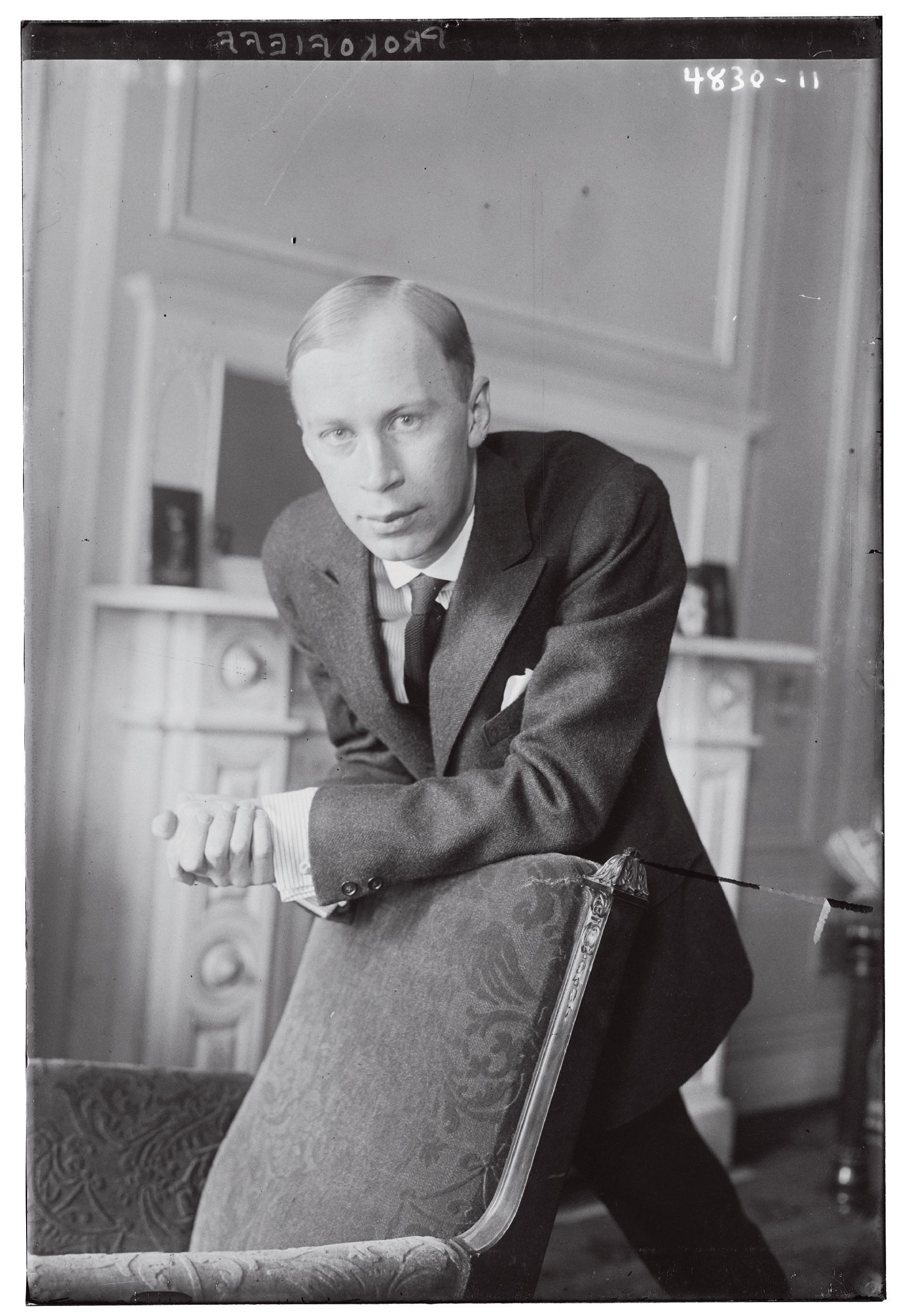
THE CLEVELAND ORCHESTRA | 15 clevelandorchestra.com PHOTO COURTESY OF THE
GEORGE GRANTHAM BAIN COLLECTION
It is said that Prokofiev declined the commission because the fee was too low, but he nonetheless accepted a lower fee and allowed the new symphony, his Fourth, to be played by the Boston Symphony Orchestra. Much of it was in fact composed in the US during a lengthy tour that Prokofiev undertook in the early months of 1930. Its reception in November of that year, after Prokofiev had returned to Europe, was only lukewarm and was shared in Europe and the USSR.
On the other hand, the Fifth Symphony, composed in 1944 after his return to the Soviet Union, was a success everywhere — as it still is — and this encouraged him to think again about the Fourth. Rather than simply revising the work, he rewrote it, expanding the size of the orchestra and adding nearly 15 minutes to its duration. Its connection to the original ballet was now remote, and it is in this form that the music has won its place as an important part of the composer’s legacy.
Soon after completing the “new” symphony, Prokofiev was a victim of the infamous Zhdanov decree, which proscribed important works by most of the leading Soviet composers. His health was poor, and for the remaining years of his life he scarcely moved from his Moscow apartment. He never heard the second version of his Fourth Symphony.
The listener will be struck by the abundance of musical ideas in this work. Symphonic style can be economical if the same material is repeatedly heard in different contexts, whereas prodigality (without any intentional reference to the
title of the original ballet) is here the plus side of the music’s loose structure. Symphonic forms are present, but hidden. In the first movement, there is a startling contrast between the placid atmosphere which opens the work and the aggressive, noisy music that bursts in at regular intervals, strangely labeled “eroico.” It is as if two alien musics are at war, with no resolution.
As we know from his ballets, there is a sweet and sometimes childish side to Prokofiev’s music, and this is to be heard here, especially in the middle two movements. He was never afraid to write cool, exposed, expressive melodies, often high above the supporting accompaniment, or barely accompanied at all.
The finale recalls the Haydnesque high spirits that inspired Prokofiev’s First Symphony, the “Classical.” This is music reminding us that the rhythmic vitality possessed in full measure by both Stravinsky and Prokofiev is the essential mark of a great composer of ballet.
The sequence of seven symphonies (eight, if you count the present work as two) reminds us that Prokofiev was a master of large, abstract compositions, too. The neoclassical First, the mechanistic Second, the busy, dramatic Third and Fourth, the perfectly balanced Fifth, and the autumnally relaxed Sixth and Seventh give ample proof of that mastery.
Macdonald
16 | 2022/2023 SEASON THE MUSIC
— Hugh
Hugh Macdonald is Avis H. Blewett Professor Emeritus of Music at Washington University in St. Louis. He has written books on Beethoven, Berlioz, Bizet, and Scriabin, as well as Music in 1853: The Biography of a Year

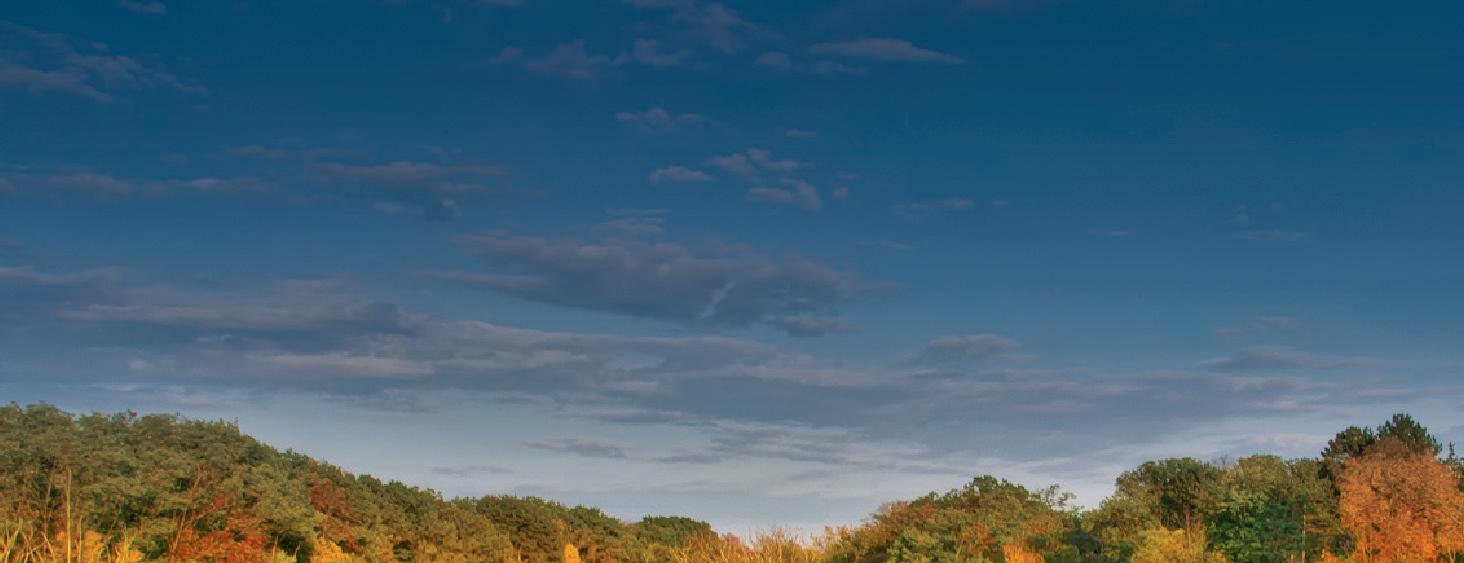







™ ljicollisioncenter.com Orange Village Do YOU LOVE Horseshoe Lake? Do YOU want to HELP SAVE Horseshoe Lake? Check Out the Horseshoe Lake Restoration Plan www.SaveHorseshoeLake.com/FOHSL-Plan Customer Confidence – Priority One Lauren Angie Jill Strauss fourth generation in the industry LJI builds confidence in every customer and ensures quality repairs and superior customer service. Our commitment is to achieve and retain customer loyalty for life! 27100 Chagrin Blvd.1640 Lee Rd. NOW TWO LOCATIONS LJI builds confidence in every customer and ensures quality repairs and superior customer service. Our commitment is to achieve and retain customer loyalty for life! 27100 Chagrin Blvd. at I-271 Orange Village (216) 1640 Lee Rd. at Mayfield Cleveland Hts. 364-7100 (216) 932-7100 TWO LOCATIONS Customer Confidence – Priority One™ ljicollisioncenter.com
 PHOTO BY ROGER MASTROIANNI
Franz Welser-Möst Music Director
PHOTO BY ROGER MASTROIANNI
Franz Welser-Möst Music Director
FRANZ WELSER-MÖST is among today’s most distinguished conductors. The 2022–23 season marks his 21st year as Music Director of The Cleveland Orchestra. With the future of their acclaimed partnership extended to 2027, he will be the longest-serving musical leader in the ensemble’s history. The New York Times has declared Cleveland under Mr. Welser-Möst’s direction to be “America’s most brilliant orchestra,” praising its virtuosity, elegance of sound, variety of color, and chamber-like musical cohesion.

With Mr. Welser-Möst, The Cleveland Orchestra has been praised for its inventive programming, ongoing support of new music, and innovative work in presenting operas. To date, the Orchestra and Mr. Welser-Möst have been showcased around the world in 20 international tours together. In 2020, the ensemble launched its own recording label and new streaming broadcast platform to share its artistry globally.
In addition to his commitment to Cleveland, Mr. Welser-Möst enjoys a particularly close and productive relationship with the Vienna Philharmonic as a guest conductor. He has conducted its celebrated New Year’s Concert three times, and regularly leads the orchestra at home in Vienna, as well as on tours.
Mr. Welser-Möst is also a regular guest at the Salzburg Festival where he has led a series of acclaimed opera productions, including Rusalka, Der Rosenkavalier, Fidelio, Die Liebe der Danae, Aribert Reimann’s opera Lear, and Richard Strauss’s Salome. In 2020, he conducted Strauss’s Elektra on the 100th anniversary of its premiere. He has since returned to Salzburg to conduct additional performances of Elektra in 2021 and Giacomo Puccini’s Il Trittico in 2022.
In 2019, Mr. Welser-Möst was awarded the Gold Medal in the Arts by the Kennedy Center International Committee on the Arts. Other honors include The Cleveland Orchestra’s Distinguished Service Award, two Cleveland Arts Prize citations, the Vienna Philharmonic’s “Ring of Honor,” recognition from the Western Law Center for Disability Rights, honorary membership in the Vienna Singverein, appointment as an Academician of the European Academy of Yuste, and the Kilenyi Medal from the Bruckner Society of America.
THE CLEVELAND ORCHESTRA | 19 clevelandorchestra.com THE CONDUCTOR
kelvin smith family chair
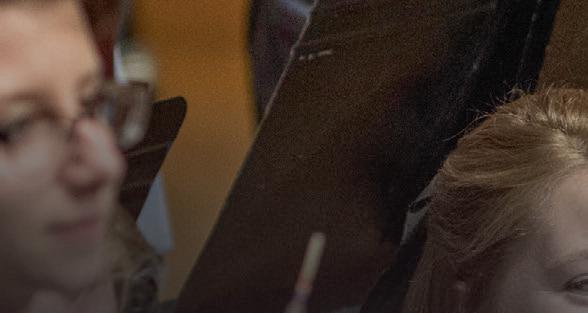
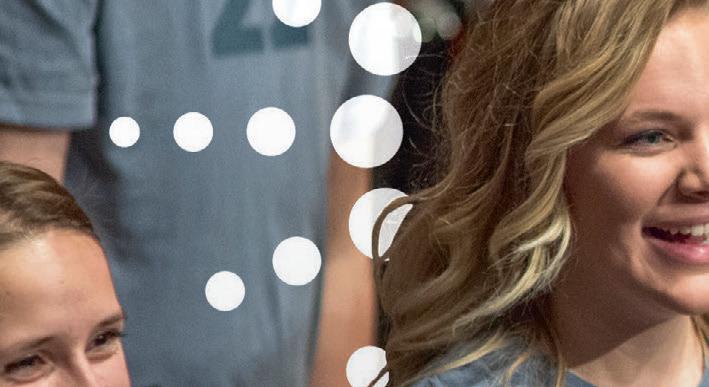


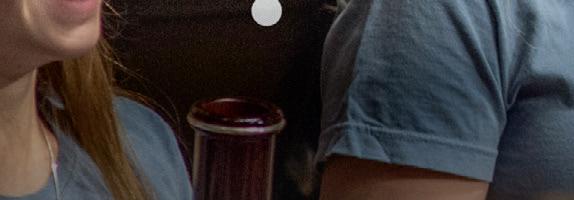













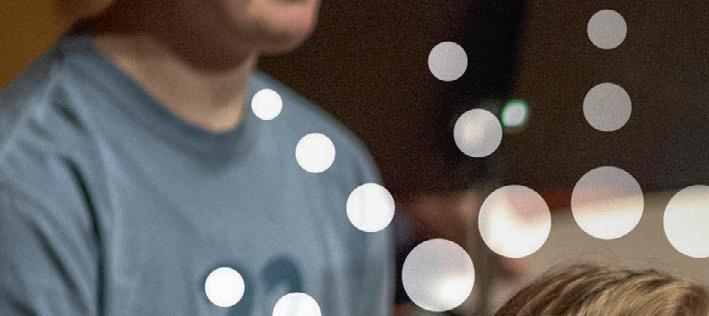






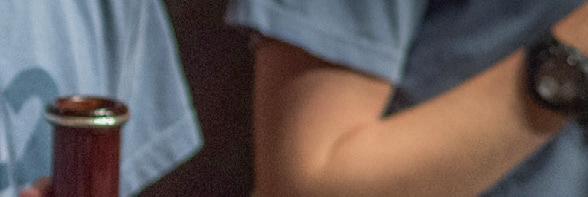












Contemporary Youth Orchestra ROB ER T MULLE R I F YO U’ RE LO OK ING TO create something magical. E P L O R E N L I NE ClevelandArtsEvents .com connects you to the region’s vibrant arts and culture scene With just a few clicks, discover hundreds of events made possible in part with public funding from Cuyahoga Arts & Culture.
Alisa Weilerstein cello
KNOWN FOR HER consummate artistry, emotional investment, and rare interpretive depth, Alisa Weilerstein was recognized with a MacArthur “genius grant” Fellowship in 2011. Today her career is global in scope, taking her to the most prestigious international venues for solo recitals, chamber concerts, and concerto collaborations with preeminent conductors and orchestras worldwide. “Weilerstein is a throwback to an earlier age of classical performers: not content merely to serve as a vessel for the composer’s wishes, she inhabits a piece fully and turns it to her own ends,” marvels The New York Times.
With her new multiseason project, FRAGMENTS, Weilerstein aims to rethink the concert experience and broaden the tent for classical music. A multisensory production for solo cello, the six-chapter series sees her weave together the 36 movements of Bach’s solo cello suites with 27 new commissions. She will perform the first chapter of the series at Severance Music Center on May 11 as part of the Mandel Opera & Humanities Festival: The American Dream.
Weilerstein recently premiered Joan Tower’s new cello concerto, A New Day, at the Colorado Music Festival, followed by a performance with The Cleveland Orchestra, which co-commissioned the work with the Detroit Symphony and the National Symphony.

An ardent proponent of contemporary music, she has also premiered and championed important new works by composers including Pascal Dusapin, Osvaldo Golijov, and Matthias Pintscher.
In spring 2020, Weilerstein released a best-selling recording of Bach’s solo suites on the Pentatone label, streamed them in her innovative #36DaysOfBach project, and deconstructed his G-major Prelude in a Vox.com video garnering more than 2 million views. Her discography also includes chart-topping albums and the winner of BBC Music’s “Recording of the Year” award, while other career milestones include a performance at the White House for President and Mrs. Obama.
Diagnosed with type 1 diabetes at age 9, Weilerstein is a staunch advocate for the T1D community. She lives with her husband, Venezuelan conductor Rafael Payare, and their two young children.
THE CLEVELAND ORCHESTRA | 21 clevelandorchestra.com
THE ARTIST
PHOTO BY DECCA / HARALD HOFFMANN
Blo ssom Summer Soirée
SUNDAY, JU LY 23 | BL OS SO M M U SI C CEN TER
A magica l ev eni n g t o bene t e Clevelan d Orchestra’s s um m er home. Learn m or e an d reserv e yo ur tick ets at cle ve landor che stra.co m/ soiree

 Prou d Present in g Sponsor of th e Blosso m Su mm er Soirée
Prou d Present in g Sponsor of th e Blosso m Su mm er Soirée
NOW IN ITS SECOND CENTURY , The Cleveland Orchestra, under the leadership of music director Franz WelserMöst since 2002, is one of the most sought-after performing ensembles in the world. Year after year, the ensemble exemplifies extraordinary artistic excellence, creative programming, and community engagement. The New York Times has called Cleveland “the best in America” for its virtuosity, elegance of sound, variety of color, and chamberlike musical cohesion.
Founded by Adella Prentiss Hughes, the Orchestra performed its inaugural concert in December 1918. By the middle of the century, decades of growth and sustained support had turned it into one of the most admired globally.
The past decade has seen an increasing number of young people attending concerts, bringing fresh attention to The Cleveland Orchestra’s legendary sound and committed programming. More recently, the Orchestra launched several bold digital projects, including the streaming broadcast series In Focus, the podcast On a Personal Note, and its own recording label, a new chapter in the Orchestra’s long and distinguished recording and broadcast history. Together, they have captured the Orchestra’s unique artistry and the musical achievements of the Welser-Möst and Cleveland Orchestra partnership.


The 2022/23 season marks Franz
Welser-Möst’s 21st year as music director, a period in which The Cleveland Orchestra earned unprecedented acclaim around the world, including a series of residencies at the Musikverein in Vienna, the first of its kind by an American orchestra, and a number of acclaimed opera presentations.
Since 1918, seven music directors —
Nikolai Sokoloff, Artur Rodziński, Erich Leinsdorf, George Szell, Lorin Maazel, Christoph von Dohnányi, and Franz Welser-Möst — have guided and shaped the ensemble’s growth and sound. Through concerts at home and on tour, broadcasts, and a catalog of acclaimed recordings, The Cleveland Orchestra is heard today by a growing group of fans around the world.
THE CLEVELAND ORCHESTRA | 23 clevelandorchestra.com
THE CLEVELAND ORCHESTRA
@ClevelandOrchestra @clevelandorchestra @CleveOrchestra @Cleveorch
PHOTO BY ROGER MASTROIANNI
THE CLEVELAND ORCHESTRA
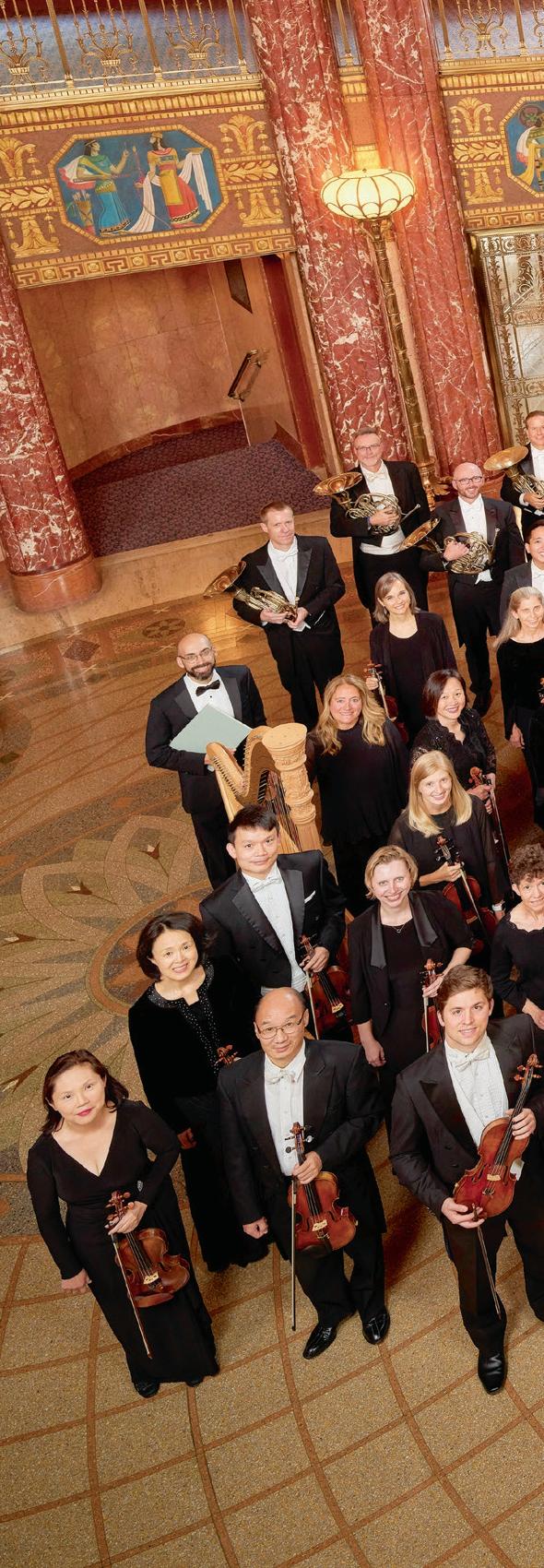
Franz Welser-Möst, MUSIC DIRECTOR
Kelvin Smith Family Chair
FIRST VIOLINS
David Radzynski
CONCERTMASTER
Blossom-Lee Chair
Peter Otto
FIRST ASSOCIATE CONCERTMASTER
Virginia M. Lindseth, PhD, Chair
Jung-Min Amy Lee
ASSOCIATE CONCERTMASTER
Gretchen D. and Ward Smith Chair
Jessica Lee
ASSISTANT CONCERTMASTER
Clara G. and George P. Bickford Chair
Stephen Tavani
ASSISTANT CONCERTMASTER
Wei-Fang Gu
Drs. Paul M. and Renate H.
Duchesneau Chair
Kim Gomez
Elizabeth and Leslie
Kondorossy Chair
Chul-In Park
Harriet T. and David L.
Simon Chair
Miho Hashizume
Theodore Rautenberg Chair
Jeanne Preucil Rose
Larry J.B. and Barbara S. Robinson Chair
Alicia Koelz
Oswald and Phyllis Lerner
Gilroy Chair
Yu Yuan
Patty and John Collinson
Chair
Isabel Trautwein
Trevor and Jennie Jones
Chair
Katherine Bormann
Analisé Denise Kukelhan
Gladys B. Goetz Chair
Zhan Shu
SECOND VIOLINS
Stephen Rose*
Alfred M. and Clara T.
Rankin Chair
Eli Matthews1
Patricia M. Kozerefski and Richard J. Bogomolny
Chair
Sonja Braaten Molloy
Carolyn Gadiel Warner
Elayna Duitman
Ioana Missits
Jeffrey Zehngut
Sae Shiragami
Kathleen Collins
Beth Woodside
Emma Shook
Dr. Jeanette Grasselli
Brown and Dr. Glenn R.
Brown Chair
Yun-Ting Lee
Jiah Chung Chapdelaine
VIOLAS
Wesley Collins*
Chaillé H. and Richard B.
Tullis Chair
Lynne Ramsey1
Charles M. and Janet G.
Kimball Chair
Stanley Konopka2
Mark Jackobs
Jean Wall Bennett Chair
Lisa Boyko
Richard and Nancy
Sneed Chair
Richard Waugh
Lembi Veskimets
The Morgan Sisters Chair
Eliesha Nelson
Joanna Patterson Zakany
William Bender
Gareth Zehngut
CELLOS
Mark Kosower*
Louis D. Beaumont Chair
Richard Weiss1
The GAR Foundation Chair
Charles Bernard2
Helen Weil Ross Chair
Bryan Dumm
Muriel and Noah Butkin
Chair
Tanya Ell
Thomas J. and Judith Fay
Gruber Chair
Ralph Curry
Brian Thornton
William P. Blair III Chair
David Alan Harrell
Martha Baldwin
Dane Johansen
Paul Kushious
BASSES
Maximilian Dimoff*
Clarence T. Reinberger
Chair
Derek Zadinsky2
Charles Paul1
Mary E. and F. Joseph Callahan Chair
Mark Atherton
Thomas Sperl
Henry Peyrebrune
Charles Barr Memorial Chair
Charles Carleton
Scott Dixon
HARP
Trina Struble*
Alice Chalifoux Chair
FLUTES
Joshua Smith*
Elizabeth M. and William C. Treuhaft Chair
Saeran St. Christopher
Jessica Sindell2
Austin B. and Ellen W.
Chinn Chair
Mary Kay Fink
PICCOLO
Mary Kay Fink
Anne M. and M. Roger Clapp Chair
OBOES
Frank Rosenwein*
Edith S. Taplin Chair
Corbin Stair
Sharon and Yoash Wiener Chair
Jeffrey Rathbun2
Everett D. and Eugenia S.
McCurdy Chair
Robert Walters
ENGLISH HORN
Robert Walters
Samuel C. and Bernette K. Jaffe Chair
CLARINETS
Afendi Yusuf*
Robert Marcellus Chair
Robert Woolfrey
Victoire G. and Alfred M. Rankin, Jr. Chair
Daniel McKelway2
Robert R. and Vilma L.
Kohn Chair
Amy Zoloto
E-FLAT CLARINET
Daniel McKelway
Stanley L. and Eloise M. Morgan Chair
BASS CLARINET
Amy Zoloto
Myrna and James Spira Chair
BASSOONS
John Clouser*
Louise Harkness Ingalls Chair
Gareth Thomas
Barrick Stees2
Sandra L. Haslinger Chair
Jonathan Sherwin
CONTRABASSOON
Jonathan Sherwin
HORNS
Nathaniel Silberschlag*
George Szell Memorial Chair
24 | 2022/2023 SEASON
Michael Mayhew§ Knight Foundation Chair
Jesse McCormick
Robert B. Benyo Chair
Hans Clebsch
Richard King
TRUMPETS
Michael Sachs* Robert and Eunice Podis
Weiskopf Chair
Jack Sutte
Lyle Steelman2
James P. and Dolores D. Storer Chair
Michael Miller
CORNETS
Michael Sachs*
Mary Elizabeth and G. Robert Klein Chair
Michael Miller
TROMBONES
Brian Wendel*
Gilbert W. and Louise I. Humphrey Chair
Richard Stout Alexander and Marianna C. McAfee Chair
Shachar Israel2
EUPHONIUM & BASS TRUMPET
Richard Stout
TUBA
Yasuhito Sugiyama*
Nathalie C. Spence and Nathalie S. Boswell Chair
TIMPANI
Paul Yancich*
Otto G. and Corinne T. Voss Chair
PERCUSSION
Marc Damoulakis*
Margaret Allen Ireland Chair
Donald Miller
Thomas Sherwood
KEYBOARD INSTRUMENTS
Carolyn Gadiel Warner
Marjory and Marc L. Swartzbaugh Chair
LIBRARIANS
Michael Ferraguto
Joe and Marlene Toot Chair
Donald Miller
ENDOWED CHAIRS
CURRENTLY UNOCCUPIED
Elizabeth Ring and William
Gwinn Mather Chair
Paul and Lucille Jones Chair
James and Donna Reid Chair
Sunshine Chair
Mr. and Mrs. Richard K.
Smucker Chair
Rudolf Serkin Chair
CONDUCTORS
Christoph von Dohnányi MUSIC DIRECTOR
LAUREATE
Daniel Reith
ASSISTANT CONDUCTOR
Sidney and Doris Dworkin Chair
Lisa Wong
DIRECTOR OF CHORUSES
Frances P. and Chester C. Bolton Chair
* Principal
§ Associate Principal
1 First Assistant Principal
2 Assistant Principal
This roster lists full-time members of The Cleveland Orchestra. The number and seating of musicians onstage varies depending on the piece being performed. Seating within the string sections rotates on a periodic basis.

THE CLEVELAND ORCHESTRA | 25 clevelandorchestra.com
PHOTO BY ROGER MASTROIANNI


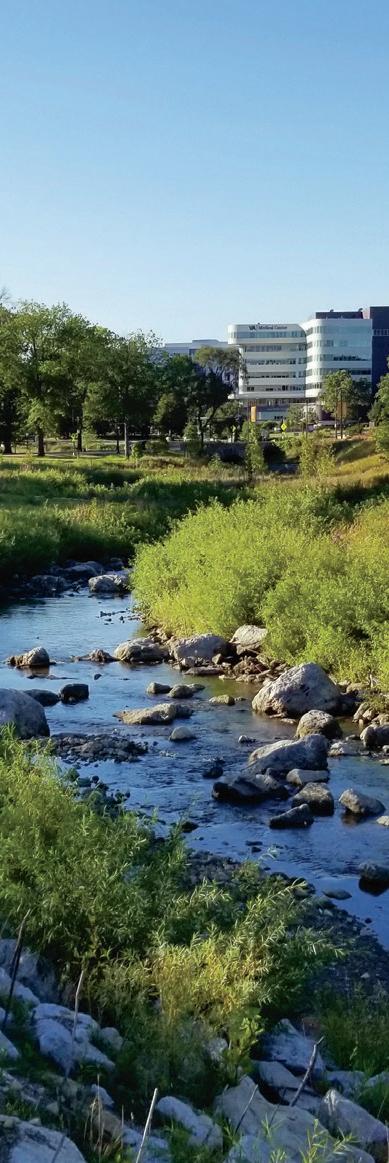
Let our cast of designers help you decide which style is right for your home. Undecided Where To Sit? 34300 Solon Road | Solon, OH | 440-248-2424 | 800-260-2949 One block south of Rt. 422 & SOM Center Road 9-9 M/Th | 9-5:30 Tu/W/F/Sa | www.sedlakinteriors.com Complimentary Delivery and Set-Up Within 60 Miles. CELEBRATING
A FESTIVAL OF CONCERTS, CONVERSATIONS & IDEAS
FESTIVAL CONCERTS & KEYNOTE
MAY 11
FRAGMENTS 1
Alisa Weilerstein,
MAY 13
KEYNOTE SPEAKER ISABEL WILKERSON
MAY 14, 17 & 20
PUCCINI’S OPERA IN CONCERT
THE GIRL OF THE GOLDEN WEST

The Cleveland Orchestra
Franz Welser-Möst, conductor
Tamara Wilson, soprano (Minnie)
Roman Burdenko, bass (Jack Rance)
Limmie Pulliam, tenor (Dick Johnson)
Cleveland Orchestra Chorus
MAY 19
DREAMS WE’VE DREAMED; SONGS WE’VE SUNG; HOPES WE’VE HELD
The Cleveland Orchestra
















































Franz Welser-Möst, conductor
FREE EVENTS
MAY 13
UNITED IN SONG!
A COMMUNITY CHORAL CELEBRATION
MAY 18
THE AMERICAN DREAM, THE AMERICAN NIGHTMARE, AND BLACK AMERICAN MUSIC
MAY 20
EXAMINING THE AMERICAN DREAM
MAY 11–20
SEVERANCE MUSIC CENTER
Scan the QR code for more festival information & details.

HEALTH & SAFETY
The Cleveland Orchestra is committed to creating a comfortable, enjoyable, and safe environment for all guests at Severance Music Center. While mask and COVID-19 vaccination are recommended they are not required. Protocols are reviewed regularly with the assistance of our Cleveland Clinic partners; for up-to-date information, visit: clevelandorchestra. com/attend/health-safety
LATE SEATING
As a courtesy to the audience members and musicians in the hall, late-arriving patrons are asked to wait quietly until the first convenient break in the program. These seating breaks are at the discretion of the House Manager in consultation with the performing artists.
PAGERS, CELL PHONES & WRISTWATCH ALARMS
As a courtesy to others, please silence all devices prior to the start of the concert.
PHOTOGRAPHY, VIDEOGRAPHY & RECORDING
Audio recording, photography, and videography are prohibited during performances at Severance. Photographs can only be taken when the performance is not in progress.
HEARING AIDS & OTHER HEALTH-ASSISTIVE DEVICES
For the comfort of those around you, please reduce the volume on hearing aids and other devices that may produce a noise that would detract from the program. For Infrared Assistive-Listening Devices, please see the House Manager or Head Usher for more details.
FREE MOBILE APP TICKET WALLET
IN THE EVENT OF AN EMERGENCY
Contact an usher or a member of house staff if you require medical assistance. Emergency exits are clearly marked throughout the building. Ushers and house staff will provide instructions in the event of an emergency.
AGE RESTRICTIONS
Regardless of age, each person must have a ticket and be able to sit quietly in a seat throughout the performance. Classical season subscription concerts are not recommended for children under the age of 8. However, there are several age-appropriate series designed specifically for children and youth, including Music Explorers (for 3 to 6 years old) and Family Concerts (for ages 7 and older).
The Cleveland Orchestra is grateful to the following organizations for their ongoing generous support of The Cleveland Orchestra: the State of Ohio and Ohio Arts Council and to the residents of Cuyahoga County through Cuyahoga Arts and Culture.
For more information and direct links to download, visit clevelandorchestra.com/ticketwallet or scan the code with your smartphone camera to download the app for iPhone or Android.
Available for iOS and Android on Google Play and at the Apple App Store.
The Cleveland Orchestra is proud of its long-term partnership with Kent State University, made possible in part through generous funding from the State of Ohio. The Cleveland Orchestra is proud to have its home, Severance Music Center, located on the campus of Case Western Reserve University, with whom it has a long history of collaboration and partnership.
© 2023 The Cleveland Orchestra and the Musical Arts Association
Program books for Cleveland Orchestra concerts are produced by The Cleveland Orchestra and are distributed free to attending audience members.
EDITORIAL
Amanda Angel, Program Editor, Managing Editor of Content aangel@clevelandorchestra.com
Kevin McBrien, Editorial Assistant
DESIGN
Elizabeth Eddins, eddinsdesign.com
ADVERTISING
Live Publishing Company, 216-721-1800
28 | 2022/2023 SEASON
YOUR VISIT
Download today for instant, secure and paperless access to your concert tickets.
clevelandorchestra.com Cleveland Orchestra performances are broadcast as part of regular programming on ideastream/WCLV Classical 90.3 FM, Saturdays at 8 p.m. and Sundays at 4 p.m.
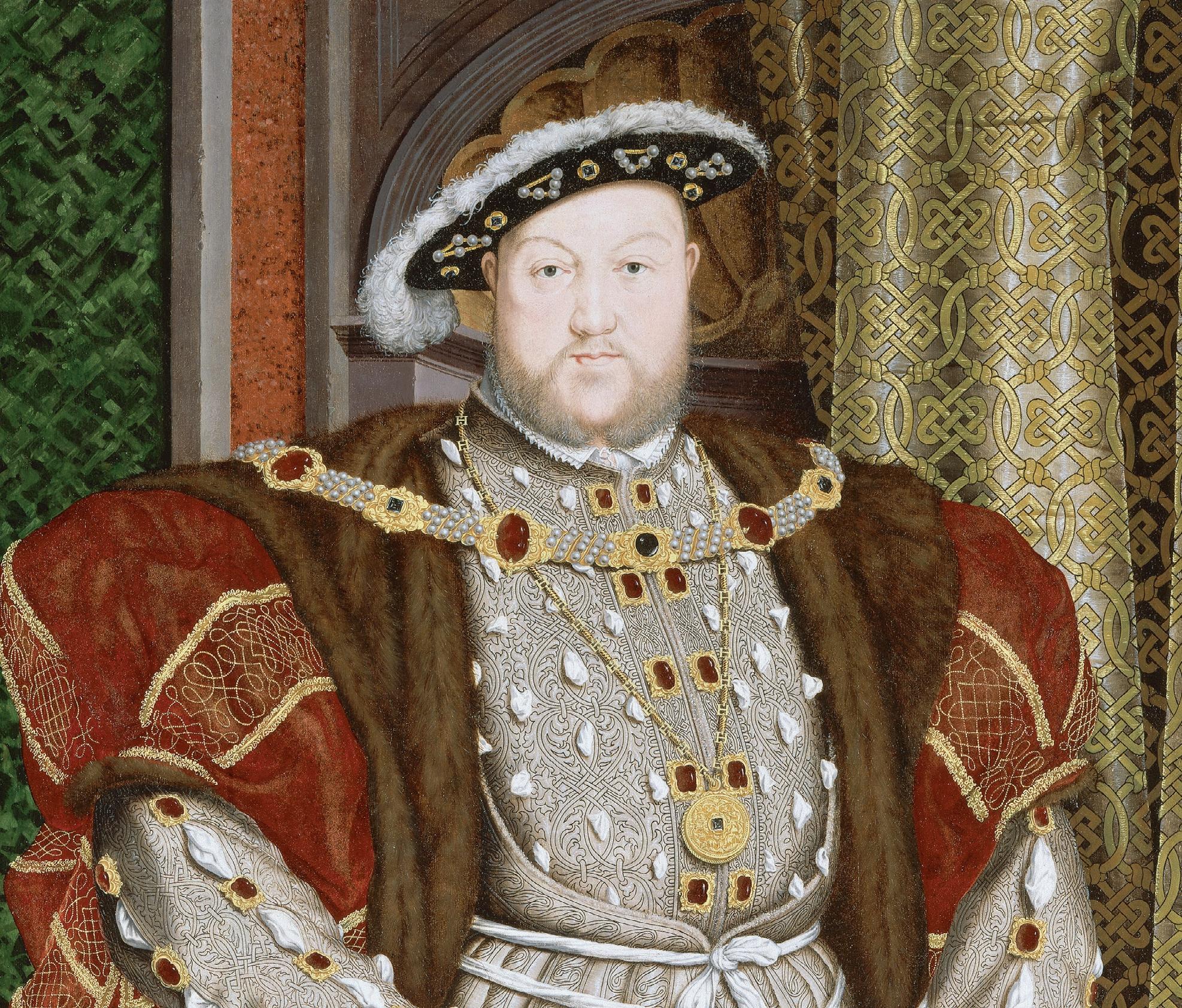
Open now | Tickets at cma.org | CMA Members FREE Meet Henry VIII, “Bloody Mary,” and Elizabeth “The Virgin Queen” as you immerse yourself in the opulence and drama of the Tudor reign. Featuring iconic portraits, intricately wrought armor, glittering tapestries woven with gold and more, this fascinating exhibition explores the magnificent art that fostered a dynasty.
I’m Just The Marrying Kind. ART AND M AJESTY IN RENAISSANCE ENGLAND TH E T U D O R S
AND M AJESTY IN RENAISSANCE ENGLAND TH E TUD O R S
AND M AJESTY IN RENAISSANCE ENGLAND TH E TUD O R S Henry VIII (detail), c. 1537. Workshop of Hans Holbein the Younger. Oil on panel; 239 x 134.5 cm. National Museums Liverpool, Walker Art Gallery, Purchased by the Walker Art Gallery in 1945, WAG 1350 cma.org HURRY, EXHIBITION CLOSES SOON!
Guess
ART
ART
A SYMPHONY OFSuccess

We believe that all Cleveland youth should have access to high-quality arts education. Through the generosity of our donors, we are investing to scale up neighborhoodbased programs that now serve 3,000 youth year-round in music, dance, theater, photography, literary arts and curatorial mastery. That’s a symphony of success. Find your passion, and partner with the Cleveland Foundation to make your greatest charitable impact.

(877)554-5054
w ww.ClevelandFoundation.org
Institute El Sistema Orchestra
Rainey


















 —Allison Loggins-Hull
—Allison Loggins-Hull











 PHOTO BY ROGER MASTROIANNI
Franz Welser-Möst Music Director
PHOTO BY ROGER MASTROIANNI
Franz Welser-Möst Music Director
































 Prou d Present in g Sponsor of th e Blosso m Su mm er Soirée
Prou d Present in g Sponsor of th e Blosso m Su mm er Soirée

























